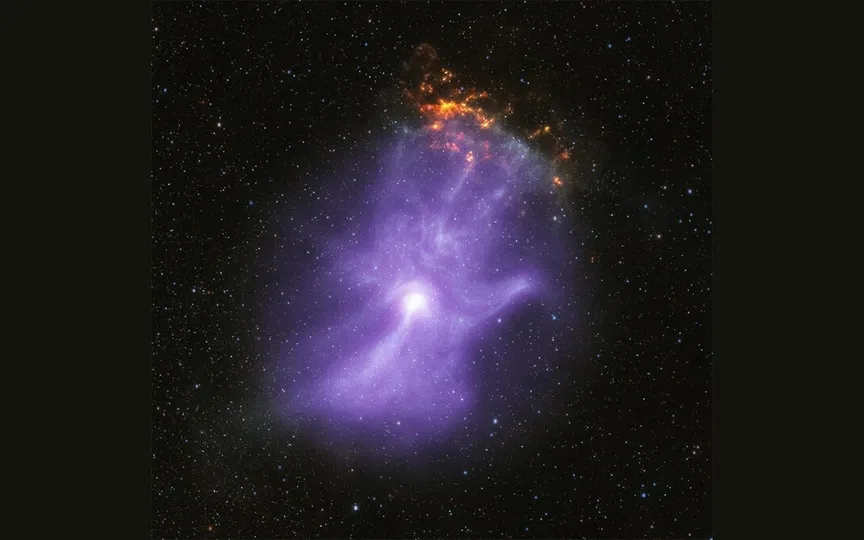Spectacular Celestial Hand Captured by NASA Chandra and IXPE Telescopes
Space is a realm full of enigmas, and despite our continuous efforts to unravel them, the discovery of something new never fails to evoke a sense of wonder. This is one of the driving factors behind the substantial investments made by space agencies like NASA in space exploration. In the year 2021, NASA successfully launched the Imaging X-ray Polarimetry Explorer (IXPE), a space observatory equipped with three identical telescopes specifically designed to measure the polarization of cosmic X-rays. Collaborating with the NASA Chandra telescope, it has recently stumbled upon a remarkable pulsar wind nebula, now known as MSH 15-52, which bears a striking resemblance to a skeletal human hand. NASA has aptly dubbed it the ‘ghostly cosmic hand’.
NASA said of the discovery in a blog post: “In 2001, NASA’s Chandra X-ray Observatory first observed the pulsar PSR B1509-58 and revealed that its pulsar wind nebula (called MSH 15-52) resembles a human hand. . The pulsar is located at the base of the nebula’s ‘palm.’ MSH 15-52 is located 16,000 light years from Earth.
Now, NASA IXPE has observed MSH 15-52 for about 17 days, the longest it has looked at a single object since its launch in December 2021, and has made some interesting observations.
NASA Captures Ghostly Cosmic Hand
“The IXPE data gives us a first-hand map of the magnetic field. The charged particles that produce X-rays travel along the magnetic field and define the nebula’s basic shape, like bones in a human hand,” says Roger Romani of Stanford University in California, who led the study.
It should be noted that NASA IXPE provides information on the orientation of the X-ray electric field, which is determined by the X-ray source’s magnetic field, known as X-ray polarization. NASA says that in large areas of MSH 15-52, the amount of polarization is still very high, resulting in it reaching the maximum level expected from theoretical work. To achieve this strength, the magnetic field must be very straight and uniform, which means there is little turbulence in the regions of the pulsar wind nebula.
“We’re all familiar with X-rays as a diagnostic medical tool for humans,” said co-author Josephine Wong, also of Stanford. “Here we use X-rays in a different way, but again they reveal information that is otherwise hidden from us.”




